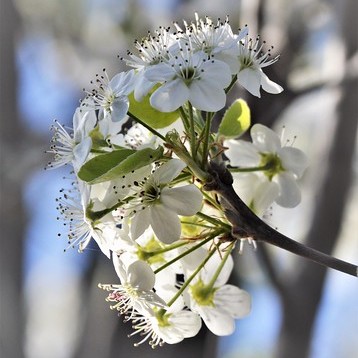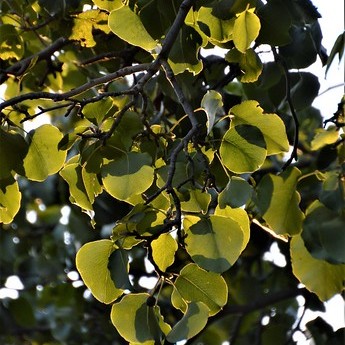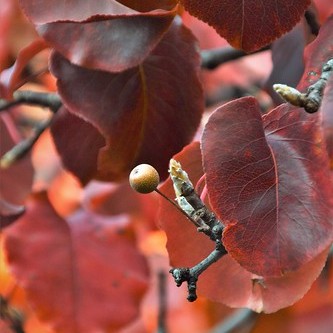



The trees were introduced to the U.S. by the United States Department of Agriculture facility at Glenn Dale, Maryland, as ornamental landscape trees in the mid-1960s. They became popular with landscapers because they were inexpensive, transported well, and grew quickly. Lady Bird Johnson promoted the tree in 1966 by planting one in downtown Washington, D.C. The New York Times also promoted the tree saying, “Few trees possess every desired attribute, but the Bradford ornamental pear comes unusually close to the ideal.”
In much of North America these cultivars, particularly ‘Bradford’, are widely planted as ornamental trees. The trees are tolerant of a variety of soil types, drainage levels, and soil acidity. Their crown shape varies from ovate to elliptical but may become asymmetric from limb loss due to excessive and unstable growth rates. The initial symmetry of several cultivars leads to their attempted use in settings such as industrial parks, streets, shopping centers, and office parks. Their dense clusters of white blossoms are conspicuous in early spring, with an odor often compared to rotting fish or semen. According to extension specialist Kelly Oten of North Carolina State University, the smell attracts flies which are the primary pollinators rather than bees. At the latitude of Pittsburgh, Pennsylvania, the trees often remain green until mid-November, and in warm autumns, the colors are often bright, although, in a cold year, they may get frozen off before coloring. In the South, Callery pears tend to be among the more reliable coloring trees.
